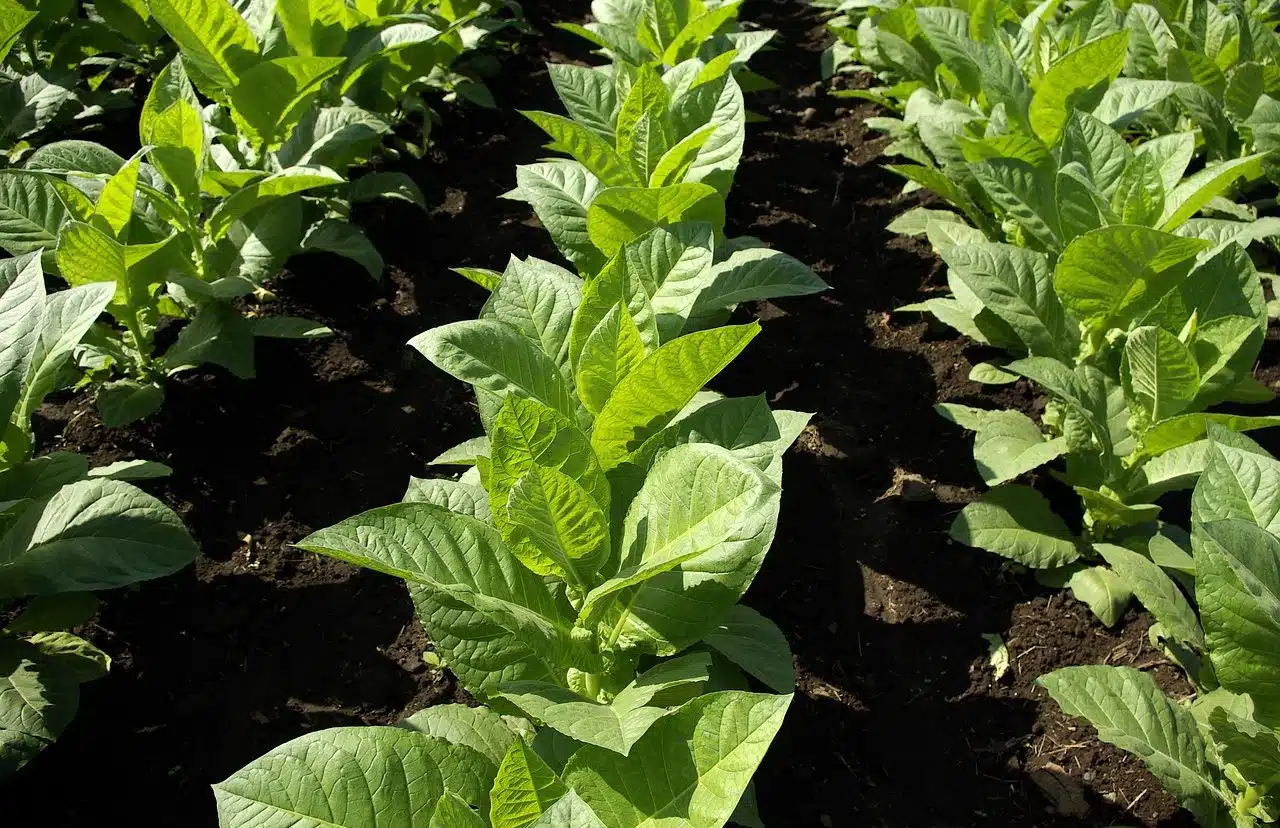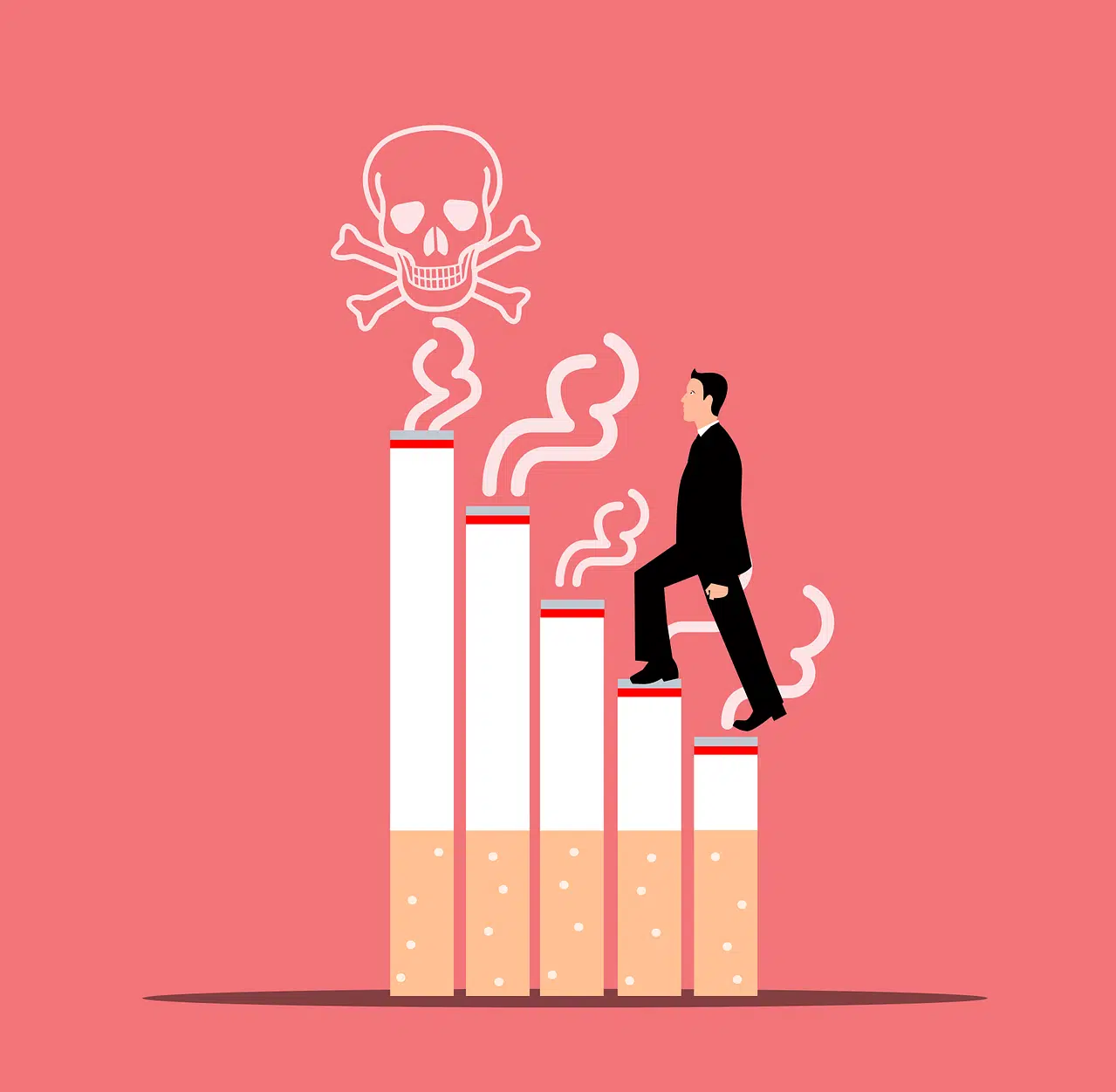
Tobacco is a narcotic plant.
Tobacco is a plant native to the American continent that has large leaves, flowers arranged in clusters and a fruit that houses numerous seeds. Belonging to the nightshade , it is characterized by being a narcotic plant thanks to the presence of nicotine.
The leaf of the plant and the product obtained from it are also known as tobacco. It is important to note that tobacco is a stimulant : it can increase blood pressure and generate tachycardia. Furthermore, due to the substances it contains, it can cause addiction .
Tobacco use
Typically, tobacco is consumed wrapped in paper, forming a cigar or cigarette . The consumer must light one end of it and place the other end in their mouth, then inhale and make the tobacco combust. The last step is to exhale the smoke.
Tobacco is usually defined as a legal drug , since most countries allow its sale. In any case, since its consumption causes serious damage to health, its marketing is usually restricted.

Tobacco consumption is harmful to health.
Harmful effects
Smoking can cause pulmonary emphysema , chronic bronchitis and cancer , among other diseases . That is why a paradox occurs: while the State authorizes the sale and consumption of tobacco legally, it develops campaigns to discourage its consumption. This particularity does not occur with other drugs whose marketing is prohibited due to their effects on health.
The prohibition of smoking in public spaces such as restaurants and bars and the obligation to include messages about the harmful effects of tobacco on cigarette boxes are some of the measures taken by the authorities to minimize its consumption.
Harmful substances present in tobacco
We know that a large number of chemical substances travel in tobacco smoke that can cause harm to both smokers and those around them; However, this fact does not lead many people to look around before lighting a cigarette. The reason why the campaigns do not stop is that tobacco is much more harmful than we think: it is enough to breathe a small portion of smoke to suffer some of its consequences.
Put in numbers, there are more than 7,000 substances found in tobacco smoke, and it is known that 250 of them are harmful to our health ; In this last group we find carbon monoxide, ammonia and hydrogen cyanide . As if that were not enough, of these 250 we know that, at least, 69 of them can cause cancer , as is the case with the following: acetaldehyde, arsenic , beryllium, vinyl chloride, cadmium, formaldehyde , nickel and polonium-210.
Diseases it causes
In addition to being the leading cause of cancer, tobacco smoking causes damage to almost all organs and systems in the body, in addition to weakening overall health. But when we talk about tobacco and cancer we should not only think about the lungs , since it also causes cancer of the esophagus, mouth, kidney , larynx, throat, liver, bladder, stomach, pancreas , cervix, colon and rectum. We must not leave aside acute myeloid leukemia, another of the consequences of this vice.
Outside of different types of cancer, tobacco causes chronic obstructive pulmonary disease, diabetes, stroke, rheumatoid arthritis, cataracts, osteoporosis, and aortic aneurysm, among other disorders. On the other hand, it is very harmful for asthma patients and increases the risk of suffering from respiratory tract infections such as tuberculosis and pneumonia. For non-smokers who are involuntarily exposed to smoke, the consequences can be fatal; For example, it increases the chances of suffering from heart disease or stroke by up to 30% , can alter the development of the fetus and increases the risk of sudden infant death.
